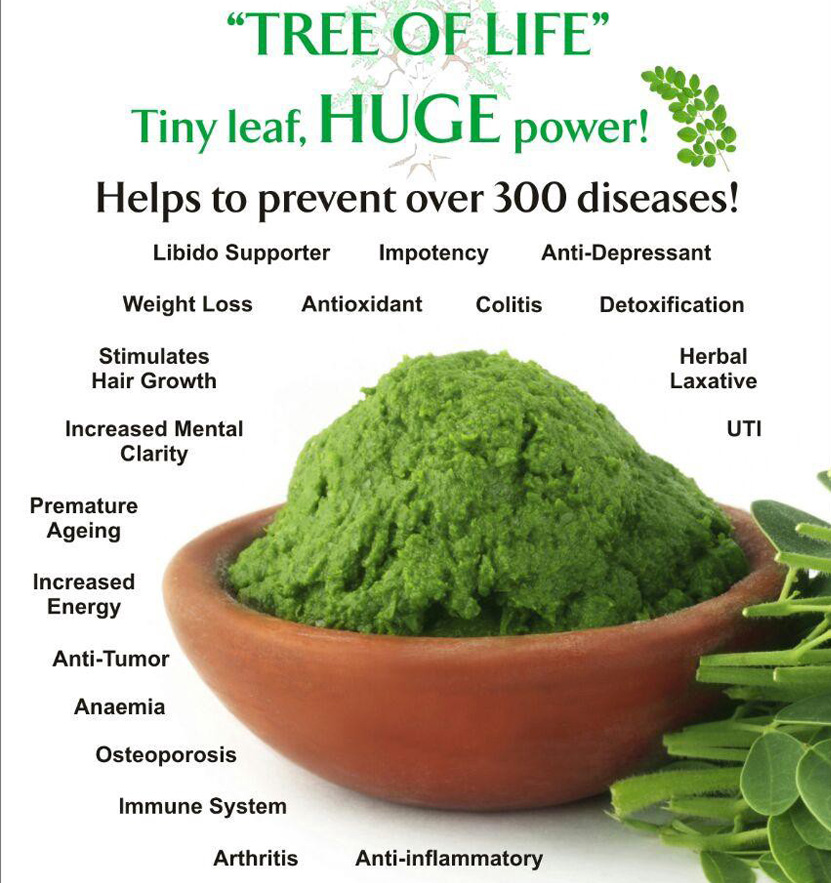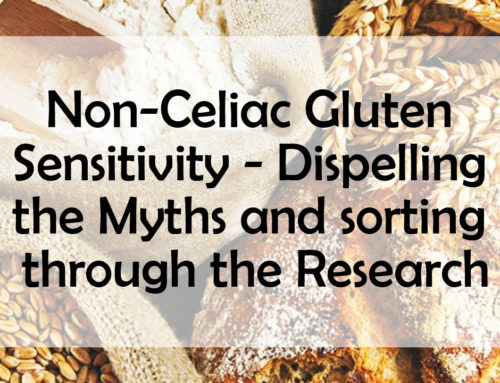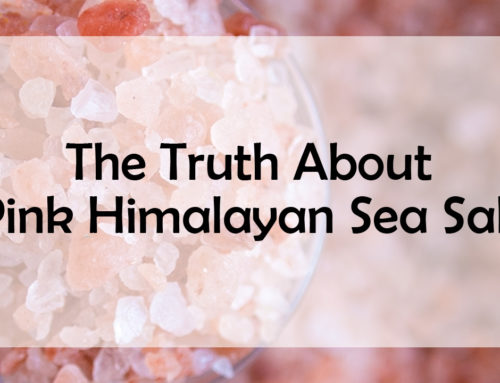Here we go – another ‘superfood’ that promises to cure what ails you. Well moringa, although quickly gaining notoriety, is not a new thing. Only until recently is modern science discovering its value. Moringa has been imparting a multitude of benefits across various cultures since ancient times. It was valued [ref.10] by the Romans, Egyptians, and Greeks for its medicinal impact on a range of ailments. It’s also been used in Bali for hundreds of years as part of herbal remedies, stemming from a time where people had a much better connection with the healing properties of nature. But let’s face it, a lot of things that people in ancient times thought was good for them, are now considered ‘old wives tales’, the value of which has been debunked and proven to be more detrimental than beneficial by advancements in medical research… but it turns out they were right on this one.
What you need to be aware of when you hear or read anything touting the benefits of the latest superfood craze is that there is, more often than not, a clear bias toward promoting said superfood.
Moringa is an important food source in many parts of the world. Almost all parts of the plant can be used. And because it can be grown cheaply and easily, is drought-resistant, fast growing, and the leaves retain lots of vitamins and minerals when dried, moringa is used in India and Africa in feeding programs to fight malnutrition. It was for these reasons that moringa oleifera was named the “miracle tree” during the food crisis in Africa.[ref.11]
Traditionally, the immature green pods are prepared similarly to green beans, while the seeds are removed from more mature pods and cooked like peas or roasted like nuts. The leaves are cooked and used like spinach.
How Good for you is it?
Moringa pods and leaves contain a significant amount of vitamins such as vitamin A, vitamin B1 (thiamine), B2 (riboflavin), B3 (niacin), B6, folate, vitamin C and beta-carotene. Its mineral wealth includes calcium, potassium, iron, magnesium, phosphorus, and zinc. It contains a very low amount of fats and offers no harmful cholesterol. Moringa leaves and pods are a nutritional powerhouse that provides a great range and amount of essential proteins, vitamins, and minerals. [ref.12, ref 13] It is a rich source of essential amino acids, which are the building blocks of proteins. [ref.14]
Studies have also shown that Moringa oleifera also has cholesterol-lowering effects, as well as [ref.15, ref.16, ref.17]. Moringa has long been widely used in Bali to lower blood sugar levels and lower cholesterol. Recent studies into the effects of lowering blood sugar support what the Balinese have known all along. [ref.18]. In one study, 30 women took seven grams of moringa leaf powder every day for three months. This reduced fasting blood sugar levels by 13.5% [ref.19]. Additionally, a small study in six diabetic patients found that adding 50 grams of Moringa leaves to a meal reduced the rise in blood sugar by 21% [ref.20].
According to Kuli Kuli, an organization that harvests moringa plants in Africa and makes them accessible to customers in the the U.S. and other western nations, gram for gram, moringa contains:
- two times the amount of protein of yogurt
- four times the amount of vitamin A as carrots
- three times the amount of potassium as bananas
- four times the amount of calcium as cows’ milk
- seven times the amount of vitamin C as oranges
Understanding the hype and statistics
What you need to be aware of when you hear or read anything touting the benefits of the latest superfood craze is that there is, more often than not, a clear bias toward promoting said superfood.
Apart from the dietary bonuses to be gained by consuming moringa, you will find all sorts of information out there that states that moringa also:

prevent inflammation, reduces fatigue and improves energy levels, stimulates hair growth, is anti-depressive, improves your vision, increases sex drive, fights infection, stimulates immunity… and of course everybody’s favourite – helps to fight cancer. What they don’t mention about their laundry list of super benefits is that all of these research results were gathered from lab tests done on rats, not humans. They also don’t mention that any of the promising test results in the fight against cancer were done (on rats) in vitro, not by oral consumption, i.e. you are not going to prevent or cure cancer by eating moringa leaves.
It’s not to say that there may not be possible similar test results in humans, but that research has not been done yet. More research is needed to fully understand all of its nutritional and medicinal properties, as well as risks associated with its consumption by humans.
Take the information above about Moringa having 7 times more vitamin C than oranges, as a prime example of how the nutritional benefits are often misleading. While the above is technically true, it is important to note the distinction that this is “gram for gram,” and not by volume. Since Moringa leaves are relatively lightweight, you would have to eat approximately 4 cups of moringa leaves to get that 7 times the amount of Vitamin C in one orange.
Furthermore, the diet of people in developing nations is often lacking in vitamins, minerals and protein. In these countries, Moringa oleifera can be an important source of many essential nutrients. That having been said, the amounts are negligible compared to what you consume if you eat a balanced diet based on whole foods. Yes, moringa is nutritious, but the fact that you are reading this means you are probably 1. not dying of starvation in a third world country and 2. are trying to be health conscious about your eating habits to begin with, so although moringa has been proven to be good for you and it can be part of, but is not essential for a well-balanced diet.
Moringa is not the only recent ‘superfood’ that has been rather deceptively and misleadingly promoted as a cure-all. Although Himalayan sea salt has slightly less sodium than regular table salt and contains more calcium, potassium, magnesium and iron, and thus hyped as a great way to get in your dietary minerals while lowering your sodium intake, the extra minerals in pink Himalayan salt are found in such small quantities that they are unlikely to provide you with any health benefits whatsoever. See the NuBLOG article about The Truth About Himalayan Sea Salt.
As opposed to Himilaya sea salt, which is pretty much a complete farce, Moringa does actually provide some health benefits in the form of vitamins, minerals and other nutrients, much like all dark leafy green vegetables, as well as some documented evidence that it helps to lower blood sugar, cholesterol and hypertension.
But Inflating the perceived potential benefits of the latest ‘superfood’ is not even the real issue. If you are eating more of something that may or may not benefit you and give you extra nutrients, what’s the big deal? In the age of Internet, anyone can post anything with no accountability and no regulation as to verify the validity of claims made. A lot of the information out there that promotes these superfoods, tends to pick and choose the selling points that “validate” their stance on the benefits, while downplaying the risks and side effects which may be detrimental to your health and can even be dangerous.
Risks & Cautions
“…but it’s all natural!” Yes, and so are deadly moulds and Anthrax. Just because it’s ‘all natural’ does not mean that it may not cause adverse effects or be potentially harmful.
The leaves of the Moringa oleifera tree are generally considered to be safe and edible, but there is some controversy regarding the roots and stems and their potentially harmful effects, especially in women. These parts of the plant may not only act as a contraceptive (both temporary or permanent) but may also lead to miscarriage and other problems. [ref.21]
There is research showing a potentially immunosuppressive and cytotoxic effect of the seeds of the plant, and extracts or supplements that contain the roots, seeds and stems should be avoided for this reason until more research is done. [ref.22]
It’s also important to note that leaves of the moringa plant have been shown to have a mildly laxative effect and may cause digestive disturbances in some people.
Because Moringa Olifera has been proven to lower blood sugar levels, hypertension and aid in thyroid function, if you are already taking medication for these ailments, speak to your doctor BEFORE adding moringa to your regular diet. In fact you need to speak to your doctor if you are taking any type of regular medication before adding any new supplements to your diet. Some of the medications to be particularly aware of are:
- Levothyroxine: Used to combat thyroid problems. Compounds in the moringa leaf may aid the thyroid function, but people should not take it in combination with other thyroid medication.
- Diabetes medications: Diabetes medications are used to lower blood sugar, which moringa also does effectively. It is vital to ensure blood sugar levels do not get too low.
- High blood pressure medication: Moringa has shown to be effective at lowering blood pressure. Taking moringa alongside other drugs that lower blood pressure may result in it becoming too low.
- Warfarin: anyone taking Warfarin or other blood thinning medications should not be including moringa as a regular part of their diet. [ref.21]
- Any medications that might be broken down by the liver: Moringa extract may decrease how quickly this happens, which could lead to various side effects or complications. [ref.22]
Summary
Before you jump on the latest superfood craze bandwagon and start adding it to everything you eat, it’s important to not believe everything you read, get all of the information you can that cites trusted references to its health claims and talk to your doctor or dietary specialist to make sure that it’s right for you and does not interact with any medication you are taking.




